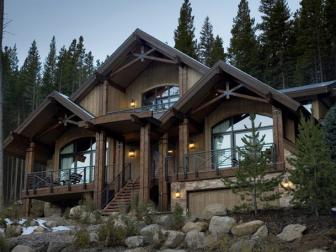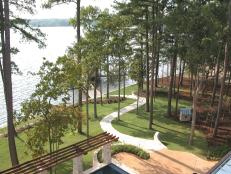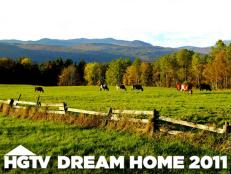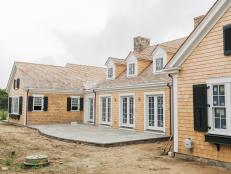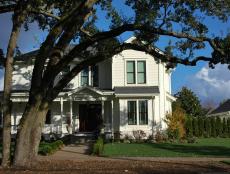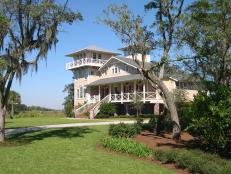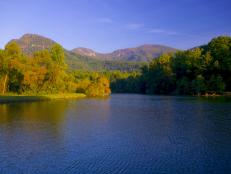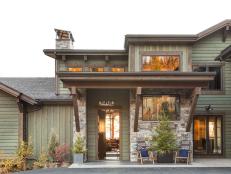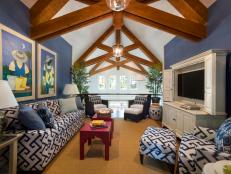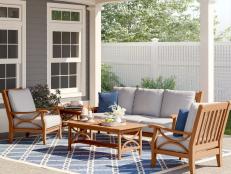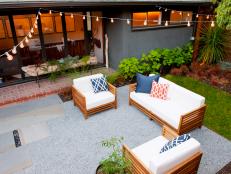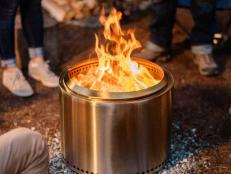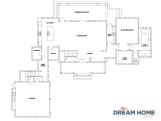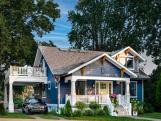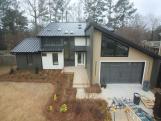HGTV Dream Home 2007: Landscape Design
Explore the Entire Home 79 Photos
From its perch on the side of a mountain, the soaring spectacle of wood and glass commands broad views of the Continental Divide, and this year's HGTV Dream Home has the decks and windows to leverage the scenery for its owners' delight.
From its perch on the side of a mountain, the soaring spectacle of wood and glass commands broad views of the Continental Divide, and this year's HGTV Dream Home has the decks and windows to leverage the scenery for its owners' delight.
It also has height — the house sits at about 9,000 feet elevation — to commandeer as much panorama as possible. And therein lies one of the principle challenges for landscaping the 4,300-square-foot contemporary ski chalet.
About 370 inches of snow falls on the property a year. Winter temperatures routinely sit at single digits or less in the evenings — it's not uncommon for the mercury to dip deep into negative territory, says builder Dennis Saffell. And temperatures can vary as much as 60 degrees between morning and afternoon at certain times of the year.
All of which makes landscaping the property tantalizing for gung-ho gardeners who find azaleas and roses boring.
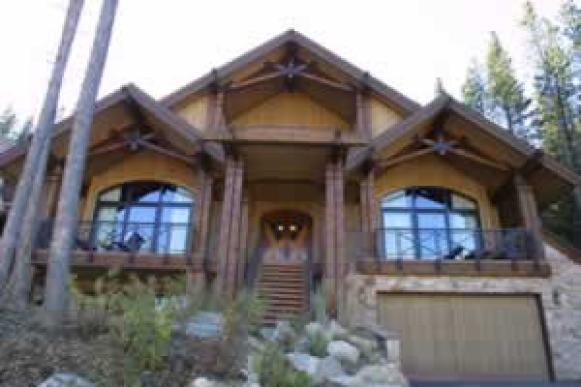
A row of rhododendrons? A shady oak? Mounds of lavender, boxwood hedges, a patch of peonies? Forget about it. The ski-in, ski-out Dream Home, which stands between the adjacent Colorado ski resorts Winter Park and Mary Jane, may be paradise for people who live to schuss down the slopes, but it's exceedingly particular about the green stuff dotting its outdoor spaces.
This never will be a manicured landscape demanding constant weeding and pruning and fussing. This is a landscape that is one with its natural surroundings, a yard where you won't need a lawnmower. The basic approach? Pick the right plants, nurture them as they struggle to strength, and then let them grow in a riot of green until the frost cloaks the land.
The plants with the right stuff are native plants. "If you plant a non-native tree up there, it won't make it," says Saffell. "The landscaping is entirely Xeriscaping."
Most of the year's precipitation falls in the winter in the form of snow that melts late in the spring or early summer. During the height of summer, what little rain falls often arrives in short but explosive storms that can damage plants that aren't suited to the climate. So Saffell used shrubby cinquefoil (Potentilla fruticosa) as a ground cover. It's tough enough to stand up to whatever summer's tumult throws upon it.
Architect John Dengler tried to preserve as much of the existing, climate-hardy vegetation as possible when he designed the house, and he arranged some of the interior spaces around the outdoor verdure.

A fir forest pushes up against the back of the house, so Dengler placed the dining room in the rear of the house and surrounded the room with glass "so as you sit in the dining room you feel very connected to the woods."
And then, of course, there are the jaw-dropping views of the Continental Divide. Instead of putting decks in their customary, rear-of-the-house location, Dengler put a burst of them on the front of the Dream Home. He also spanned the porch across the facade, and fit as much glass as possible into the front of the home, all for the sake of the view that stretches across evergreen forests, alpine meadows and jagged jumbles of rocks before meeting the Divide's snow-capped grandeur.
Saffell says his team did not install extensive landscaping, largely because of the climate and site limitations. The houses faces east — toward the Continental Divide — and north, so the site is in deep shade by 3 p.m. in the winter. The sunlight it gets on those short winter days, though, is of the brilliant, high-altitude variety that makes skiers reach for sunglasses.
Everything Saffell's firm planted, he says, is "natural materials you would find in the forest, put in a manicured way so they don't look rough."
A trio of tall, spare lodgepole pines mark the front of the house, all of them thriving on the slope long before the house was built. To that dramatic detail, Saffell's team added Engleman spruce, Colorado blue spruce and Douglas fir trees, as well as that hardy cinquefoil.
They also used boulders from the homesite to add decorative touches to the small property, including the path from the driveway to the front door.
"Instead of just pouring concrete and making it a suburban walkway, we built the path out of natural boulders that came out of the hill right there," Saffell says. "So you walk up stairs made of natural materials. There's no concrete. It's like you're climbing a little mountain to get into the home each time, minus the effort."
In the back of the property — the hot-tub zone — they installed space for seasonal gardens, where flowers and herbs of the owners' choosing can burgeon during the short summer.
"Our growing season is the bare minimum," Saffell says. "It's about seven days. In other words, it can frost any month of the year. In 1988, it snowed every month of the year." Needless to say, potted plants are popular in Colorado's high country.

.-Battle-on-the-Beach-courtesy-of-HGTV.-.jpg.rend.hgtvcom.196.196.suffix/1714761529029.jpeg)




